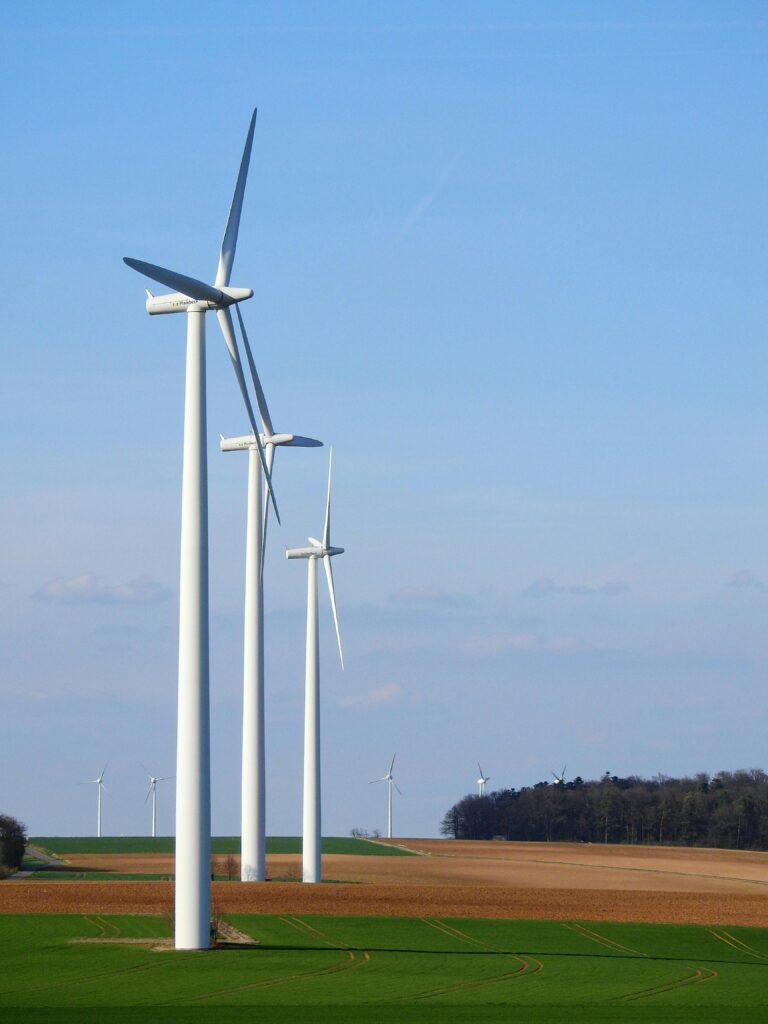Learn all about renewable energy – types, benefits, technologies, and future trends. A must-read guide for beginners and professionals in the clean energy industry.

1️⃣ What Is Renewable Energy?
Renewable energy comes from natural sources that constantly replenish themselves—such as sunlight, wind, flowing water, geothermal heat, and organic biomass. These resources are naturally sustainable and won’t run out in human timescales. Unlike fossil fuels, renewable energy sources produce little to no greenhouse gas emissions, making them a key solution in combating global warming and reducing air pollution.
From rooftop solar panels powering homes to massive offshore wind farms supplying cities, renewable energy is transforming how the world generates electricity.
2️⃣ Why Renewable Energy Matters
Environmental Impact: Switching to renewables significantly cuts carbon emissions, improves air quality, and reduces environmental degradation caused by mining and drilling.
Energy Security: By harnessing domestic resources like solar and wind, nations reduce dependency on imported fuels, strengthening energy independence.
Economic Growth: The renewable sector creates millions of jobs globally in manufacturing, installation, engineering, and maintenance. It also stimulates local economies.
Long-Term Savings: Although the initial investment can be high, renewable systems have low operational costs and provide energy for decades with minimal maintenance.
3️⃣ Main Types of Renewable Energy
☀ Solar Energy
How It Works: Photovoltaic (PV) panels convert sunlight directly into electricity. Solar thermal systems can also heat water for residential and industrial use.
Best For: Homes, businesses, industrial plants, and large solar farms.
Pro Tip: Choose high-efficiency panels with long warranties (20–25 years) for maximum returns.
🌬 Wind Energy
How It Works: Wind turbines capture kinetic energy from the wind and convert it into electricity through a generator.
Best For: Open plains, coastal regions, and offshore installations.
Emerging Trend: Hybrid systems that combine wind and solar for round-the-clock energy production.
💧 Hydropower
How It Works: Flowing water turns turbines to generate electricity. It can be large-scale dams or small “micro-hydro” setups in rural areas.
Best For: Regions with rivers or consistent water flow.
Note: Large dams can affect ecosystems—environmental impact must be considered.
🌋 Geothermal Energy
How It Works: Taps into underground heat reservoirs to produce steam and generate power.
Best For: Areas with high geothermal activity like Iceland, New Zealand, and parts of India.
🌾 Biomass Energy
How It Works: Organic materials—wood, crop waste, manure—are burned or processed into biofuels such as biogas and biodiesel.
Best For: Rural and agricultural communities with abundant organic waste.
4️⃣ Benefits for New Players
-
Low Entry Barrier: Rooftop solar and small wind turbines are now affordable for homeowners and small businesses.
-
Government Incentives: Many countries offer subsidies, tax credits, and soft loans to encourage adoption.
-
Growing Demand: With rising electricity needs and climate concerns, renewable energy markets are expanding rapidly.
5️⃣ Opportunities for Established Players
-
Technology Upgrades: Invest in high-efficiency solar modules, smart inverters, and energy storage systems.
-
Expansion into Emerging Markets: Mini-grids, hybrid solutions, and rural electrification projects offer high growth potential.
-
Value-Added Services: Offer energy audits, performance monitoring, and preventive maintenance contracts.
6️⃣ Future Trends to Watch
-
Energy Storage Boom: Falling costs of lithium-ion and sodium-ion batteries will enable 24/7 renewable power supply.
-
Green Hydrogen: A clean fuel that could revolutionize industries like steelmaking, shipping, and aviation.
-
AI & IoT in Energy Management: Artificial intelligence can predict demand, optimize generation, and cut waste in real-time.
-
Decentralized Energy Systems: Peer-to-peer electricity trading could empower communities to share and sell excess power.
7️⃣ How to Get Started in Renewable Energy
-
Learn the Basics: Understand the technology, costs, benefits, and legal requirements.
-
Pick a Niche: Rooftop solar, EV charging stations, wind farms, or battery storage solutions.
-
Research Policies: Explore government schemes, subsidies, and net metering opportunities in your region.
-
Partner With Experts: Collaborate with certified engineers and installers for quality execution.
-
Promote Smartly: Highlight environmental and financial benefits to attract eco-conscious customers and investors.
Final Word
Renewable energy is no longer just “the future”—it’s powering our present. Whether you’re an individual installing a small solar rooftop or a company investing in large-scale wind farms, the opportunities are vast and growing. The clean energy revolution is here—be part of it, and help shape a sustainable tomorrow.
Leave a Reply